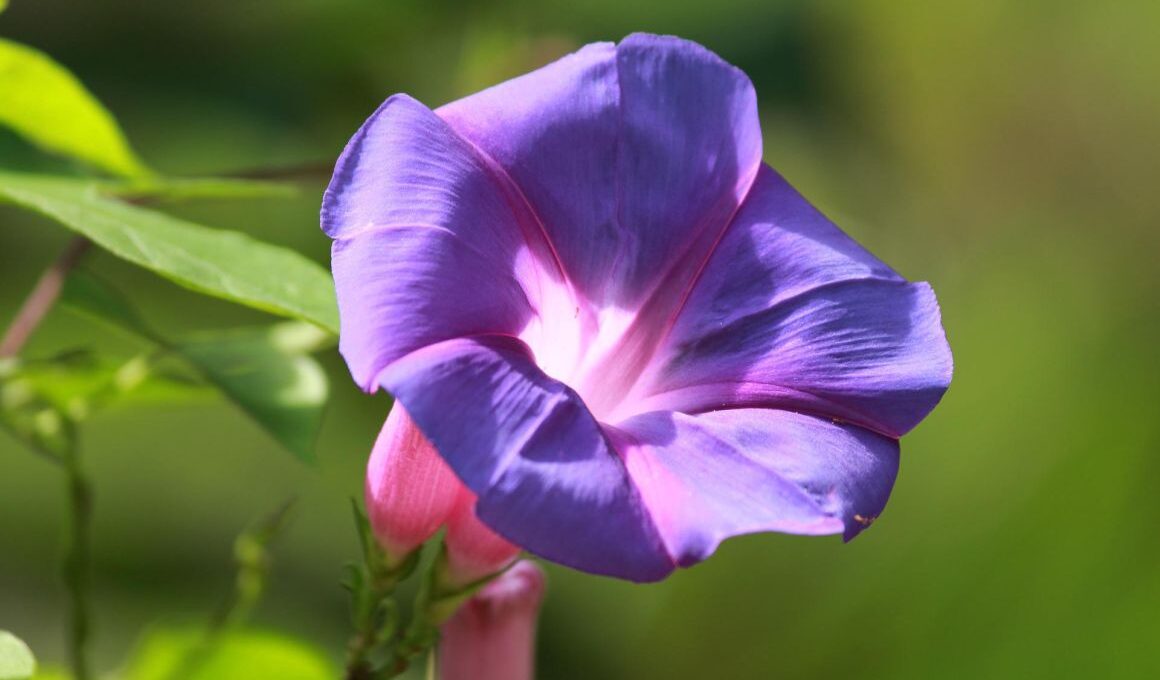Moonflower vines are very easy to grow and thrive in both full sun and partial shade locations. They make excellent additions to any garden or landscape and can be used to climb trellises, arbors, or fences. Moon flower is also a popular houseplant and can be grown indoors either in pots or hanging baskets. Let’s find out more about this unusual vine.
Moon Flower (Ipomoea Alba) – Morphology
The moonflower is a climbing vine that produces large, fragrant white flowers. The blooms open in the evening and close in the morning. Each flower only lasts one night. The plant gets its common name from its habit of blooming at night.
The moon flower has heart-shaped leaves that are dark green in color. The vine can grow up to 20 feet in length. The flowers are white with a purple center. They are about 6 inches in diameter and have a sweet fragrance.
Moonflowers are native to tropical America, but they have been introduced to other parts of the world, including Europe and Australia. In some areas, they are considered to be invasive plants. This moon vine can be grown from seed or cuttings. They prefer warm weather and full sun but will tolerate partial shade.
Moonflowers are not generally grown for their flowers but for their foliage. The leaves of the plant are used in traditional medicine. Moonflower tea is said to be helpful in treating anxiety and insomnia. The flowers are sometimes used in making perfume.
How to Care for Moonflowers
Moonflowers are a beautiful and unique addition to any garden, but they do require some special care to thrive. Here are a few tips on how to keep your plants healthy and happy:
- Watering: moonflowers need plenty of water, especially when they are blooming. Be sure to water them deeply and regularly, especially during hot weather.
- Fertilizing: a monthly feeding with a balanced fertilizer will help your nocturnal plants grow strong and produce lots of flowers.
- Pruning: once the blooming season is over, cut the stems back to about 6 inches to encourage new growth.
- Light exposure: moonflowers do best in full sun, but can tolerate some partial shade.
- Soil: this vine prefers a rich, well-drained soil. If your soil is poor, you can amend it with compost or organic matter before planting.
Moonflower Seeds
The moon flower is a beautiful night-blooming flower that has captivated gardeners for centuries. The large, white flowers open in the evening and close at dawn, making them a perfect addition to any nighttime garden.
Moonflowers are easy to grow from seed and will bloom the first year if started early enough. The best time to start the seeds is 4-6 weeks before the last frost. Sow the seeds indoors on a heat mat set to 70-75 degrees Fahrenheit.
Keep the soil moist but not soggy and within a week or two, you should see little seedlings poking through the soil.
Once they have their second set of true leaves, they can be transplanted into individual pots. Harden off the plants for a week or two before planting them outdoors in a sunny spot with well-drained soil. Moonflowers do best when their roots are restricted, so plant them in pots or small hills rather than letting them sprawl.
How to Grow Moonflower Plants Indoors
If you want to grow moon flower plants indoors, there are a few things you need to do. First, choose a sunny spot in your home for the plants. They will need at least six hours of sunlight each day. You can also use grow lights if you cannot provide enough natural light.
Next, make sure the pots you use have drainage holes. Moonflower plants need to be well-drained, so water can easily pass through the soil. You also need to fertilize your plants regularly. A good fertilizer for moonflowers is one that is high in phosphorus.
When it comes to watering, be sure to do it in the morning, so the leaves have time to dry before nightfall. This will help prevent fungal diseases. Lastly, pinch back the tips of the plants to encourage bushier growth. Now you know how to grow moon flower plants indoors!
Interesting Facts About the Moon Flower Plant
Did you know that moon flowers are actually a type of tobacco plant? They’re native to South America, and their scientific name is Nicotiana alata. Moon flowers are related to other popular types of tobacco plants like Nicotiana rustica (wild tobacco) and Nicotiana tabacum (cultivated tobacco).
Moon flowers are grown for their beautiful, fragrant flowers. The flowers only open at night and close in the morning. They’re often used in moon gardens or nighttime gardens because of this feature. The plant itself is an annual, which means it only lives for one growing season.
Moon flowers are generally disease-free and pest-free. However, aphids may be a problem. These small insects suck the sap from plants, which can weaken them. You can control aphids by spraying them with water or an insecticidal soap.
Moon flower blooms at night because that is when it is pollinated by night-flying insects such as moths. These insects are attracted to the flower’s strong fragrance, which is only released at night.



















